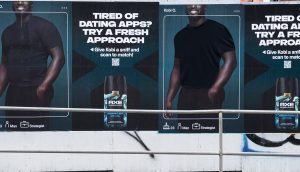Social networking site Facebook’s fastest growing segment is Canada, according to Mike Murphy, VP media sales, who keynoted strategy‘s Understanding Youth conference in Toronto yesterday.
Social networks, and how brands can participate in the scene, was a topic that cropped up repeatedly at the conference. And the advice that was typically shared, is ‘yes,’ there’s room, but with a big caveat. You must provide something meaningful. And then get out of the way and let the group do the rest.
Youth delegates participating in a Youthography panel were quick to warn the audience of marketers that they wouldn’t be receptive to a corporate presence, saying the likes of Facebook and Piczo are for friends. When asked whether they would join a group sponsored by a brand if the content was about something beyond product, some of the four tween/teen panelists were still dubious, but allowed that if it was a brand they liked, supporting a social effort, or other relevant content group connection, they would likely join to check it out.
Walking the audience through the workings of the new social world order, Murphy illustrated the power of tapping into community, saying clickthrough rates on viral impressions are 12-18% higher than the original ad clickthrough rates.
Murphy referred to Canada as being very welcoming to Facebook. His deliberate understatement referred to numbers that are actually staggering. There are 500,000 active users in the Toronto area alone, and the community is growing at 5% a week. Canadian users visit the site an average of 2.7 times a day, clocking in at a daily average of 29.6 minutes. 75% of Facebook’s 2 million Canadian users log in daily, and the addictive nature of the online phenom has been triggering Facebook bans by some employers (the latest ban affecting Ontario government workers).
Toronto-based Segal Communications works with Facebook to build Canadian ad opps on the network, and PlayStation Canada has already experienced success with the site – its sponsored group attracted 1,000 members in just seven days. It leveraged banner ads and ‘newsfeed stories,’ which plant PlayStation messaging on users’ homepages when they log in. And, when users join a group, a notification appears on their friends’ newsfeeds too, translating into viral impressions.


















